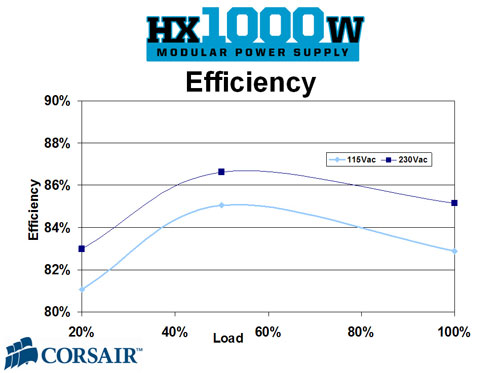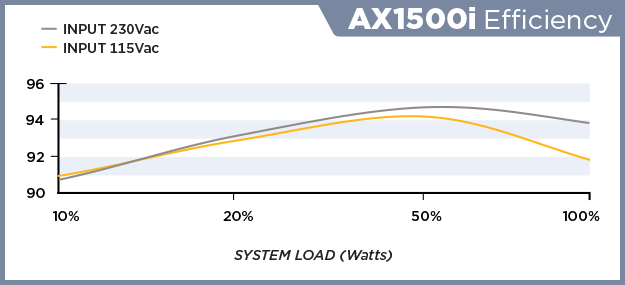80 PLUS Certification – Technology Explained
The 80 PLUS certification initiative was launched in 2004 by Ecos Consulting to promote energy efficiency, which results in lower power consumption, less heat output, and therefore greater reliability. The first 80 PLUS PSU was brought to market by Seasonic early the next year. There are currently over 6,400 PSUs in the 80 PLUS database, with more joining the ranks all the time. This is a clear indication that it has been a success and become an industry standard.
80 PLUS Certifications
Originally, there was only one certification, known simply as “80 PLUS” and requiring an efficiency of 80% at three different load levels. In early 2008 three more levels of certification were added, with another being added in late 2009 and the final current level added in early 2012.
At the time of writing there are six 80 PLUS certification levels: 80 PLUS, 80 PLUS Bronze, 80 PLUS Silver, 80 PLUS Gold, 80 PLUS Platinum, and 80 PLUS Titanium. Efficiency is not a constant across the full load range of a PSU, and normally peaks around the 50% load mark. For this reason, the 80 PLUS standard has efficiency requirements at multiple load levels. All six of the ratings have efficiency requirements at 20%, 50% and 100% load, with Titanium having an additional requirement at 10%.
For certification, a PSU needs to meet all three (or four) of the required efficiencies. This means that if a PSU meets two requirements for 80 PLUS Silver and one for 80 PLUS Platinum it still only qualifies for 80 PLUS Silver. The requirements are laid out in the table below.
| Rating | 115v, 10% Load | 115v, 20% Load | 115v, 50% Load | 115v, 100% Load | 230v, 10% Load | 230v, 20% Load | 230v, 50% Load | 230v, 100% Load |
| 80 PLUS | Not Tested | 80% | 80% | 80% | Not Tested | 82% | 85% | 82% |
| 80 PLUS Bronze | Not Tested | 82% | 85% | 82% | Not Tested | 85% | 88% | 85% |
| 80 PLUS Silver | Not Tested | 85% | 88% | 85% | Not Tested | 87% | 90% | 87% |
| 80 PLUS Gold | Not Tested | 87% | 90% | 87% | Not Tested | 90% | 92% | 89% |
| 80 PLUS Platinum | Not Tested | 90% | 92% | 89% | Not Tested | 92% | 94% | 90% |
The efficiency is worked out by dividing the DC output supplied by the PSU by the AC input. For example, if a PSU is supplying 600 watt DC while drawing 720 watt AC, the efficiency is calculated at 600/720 = 0.833… = 83%. The 120 watt difference is heat, which the fan in the PSU has to dissipate.
Calculating Power Draw
We can work the opposite direction as well, calculating that a 600 watt PSU outputting its full rated load, with an 80 PLUS Gold rating, and running on from a 230v outlet will draw 600/0.89 = 674.16 watts from the wall. Similarly, if that same situation were applied to a PSU with a standard 80 PLUS rating, the calculation would be 600/0.80 = 750 watts from the wall, or an additional power draw (and therefore heat output) of over 75 watts.
Certification Verification
Of course, there are unscrupulous manufacturers out there that try to claim 80 PLUS certification without actually having any, as well as others than use their own motif such as 85 PLUS or 90 PLUS. To ensure that this type of fraud doesn’t go unregulated, a full list of PSUs can be seen on the 80 PLUS website. Note that if a company rebrands an OEM’s legitimately 80 PLUS certified PSU, the certification doesn’t carry over to the rebrand, and it will need to be re-tested as a rebrand in order to obtain certification.











